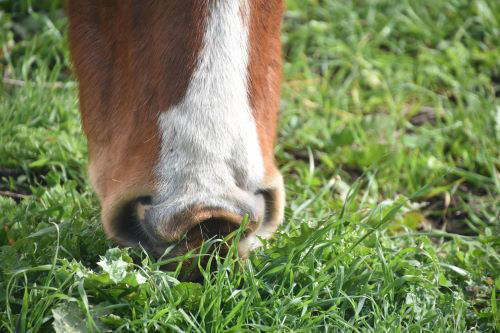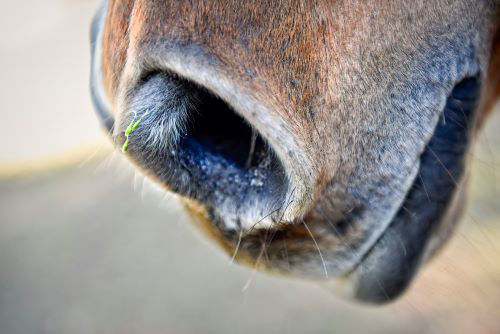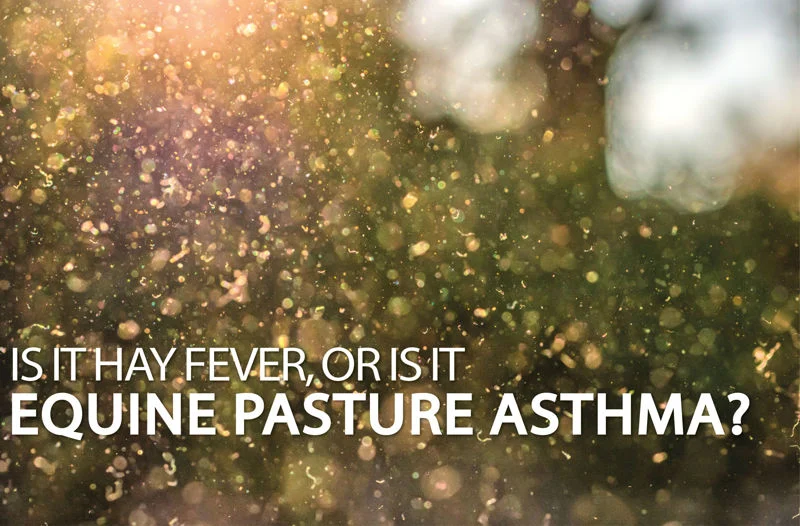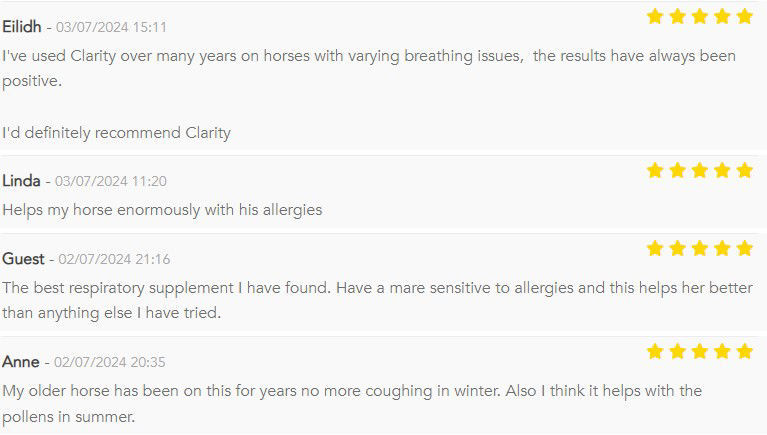Introduction
Pollen can be a common trigger for allergies and in horses and is frequently associated with respiratory issues. With our climate becoming warmer and seeing hotter summers, higher levels of pollen and dust occur, and this is leading to an increased number of horses suffering from Equine Pasture Asthma or as it was previously known, Summer Pasture Associated Recurrent Airway Obstruction (SPARAO).
Unfortunately, pollen is unavoidable, and for horses that suffer from respiratory disorders, it can cause irritation and inflammation in the respiratory system.
Equine Pasture Asthma is a form of equine asthma or recurrent airway obstruction (RAO) that is commonly seen in pasture kept horses during the summer months. Managing these horses can be tricky, especially if they are predisposed to Equine Asthma or other breathing disorders. Management for Equine Pasture Asthma is usually stabling to help reduce exposure to pollen allergens, however, for horses with existing respiratory disease, long periods of stabling may not be possible.
How does Equine Pasture Asthma occur?
Equine Pasture Asthma occurs in horses who are sensitive to pollen that they inhale when out grazing. When inhaled, these pollen particles trigger an allergic reaction which in turn initiates an immune response.

Equine pasture asthma occurs in horses who are sensitive to pollens that they inhale when out grazing
Equine Pasture Asthma is clinically identical to Chronic Obstructive Pulmonary Disease (COPD) except that it affects horses who are turned out on pasture3. Clinical improvement appears to occur during the winter months or when horses are removed from grazing and stabled3.
Respirable particles are those less than 5µm in size and are significantly small enough to penetrate the peripheral airways of horses4 and are strongly associated with equine asthma5. Whilst pollen grains are larger in size (10 - 100µm in diameter), it appears that respirable particles can contain pollen allergens3 and this is why we are seeing increased incidences of Equine Pasture Asthma in horses.
What are the symptoms of Equine Pasture Asthma?
The signs of Equine Pasture Asthma are typical of that of other airway diseases such as Equine Asthma and can include:
· Coughing
· Nasal discharge
· Reduced exercise tolerance
· Increased respiratory rate
Pathophysiological characteristics (physical and functional changes) include airway inflammation, increased mucus production and bronchoconstriction1. It is suspected that an environmental allergen in the horse’s environment is likely to be causing these immunologically induced responses in the horse’s airways.

Nasal Discharge is a common symtom of Equine pasture asthma
Horses affected by Equine Pasture Asthma who are maintained on pasture in the summer have shown a clear onset of this disease associated with the weather becoming warmer2. However, clinical exacerbation (intensification) of Equine Pasture Asthma was found to be present throughout the whole summer period2.
High pollen counts have been associated with an increased prevalence of COPD and fungal spores found in outdoor environments are also a risk factor for the disease.
Managing a horse with Equine pasture asthma
Environmental management is key to supporting horses with respiratory conditions. Horses suffering from Equine Pasture Asthma will become symptomatic for several months throughout the summer, rather than showing symptoms year-round, unless they are also suffering from other forms of respiratory disease, such as COPD or RAO.
Stabling horses at times when pollen counts are high and using nose nets are ways to help horses with Equine Pasture Asthma. Identification of which tree or plant pollen is causing the issue will also go a long way in terms of management as horses can then be kept in a field away from these triggers.

Using nose nets are ways to help horses with Equine pasture asthma
Nutritional support from Feedmark
Clarity™ is a powerful blend of herbs which soothe and support the respiratory tract, promoting clear airways and healthy lung function. This effective supplement is ideal for those who are sensitive to dust or pollen as it supports the mucosal lining which protects against respirable particles.
Clarity™ helps to keep your horse’s respiratory tract in good health and allows your horse to perform at their optimum level. The addition to the horse's diet of Garlic, beneficial herbs such as Liquorice, and antioxidants that help to neutralise free radicals, have been shown to support the horse’s respiratory system and target healthy lung function. Traditionally used herbs such as Thyme, Elderflower and Coltsfoot help to soothe the respiratory tract, whilst Oregano and Lemon peel helps to keep the airways clear.
Don't just take our word for it, have a look at the over 600 independent 5* reviews that we have for Clarity™
References
1. Beadle et al., (2002) Interleukin-4 and interferon-gamma gene expression in summer pasture-associated obstructive pulmonary disease affected horses. Equine Veterinary Journal 34 (4) 389-394
2. Coats et al., (2006) Temporal clinical exacerbation of summer pasture-associated recurrent airway obstruction and relationship with climate and aeroallergens in horses. American Journal of Veterinary Research 67 (9) 1635-1642
3. Ward et al., (2005) Climatic and aeroallergen risk factors for chronic obstructive pulmonary disease in horses. American Journal of Veterinary Research. 66 (5) 818-824
4. Clements J.M., and Pirie, R.S., (2007) Respirable dust concentrations in equine stables. Part 1: Validation of equipment and effect of various management systems. Research in veterinary Science 83 (2) 256-262
5. Moore-Colyer et al (2016) The Effect of Steaming and Soaking on the Respirable Particle, Bacteria, Mould, and Nutrient Content in Hay for Horses. Journal of Equine Veterinary Science 39. 62-68.














